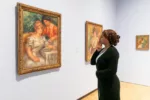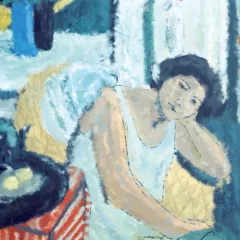Striking Art Workers Use Museum’s Own Collection Against It
The Philadelphia Museum of Art (PMA) was authorized by an overwhelming ninety-nine percent majority of union members just before the museum was set to launch its highly anticipated and high-profile Matisse in the 1930s exhibition. Given the timing, workers organized under the rallying cry of “No contract, no peace. No contract, no Matisse.” Although Matisse in the 1930s was heralded as a groundbreaking exhibition meant to appeal specifically to Philadelphians, the prestigious exhibition has come off as completely tone-deaf to the PMA’s own workers and network of supporters who harnessed art, history, and social media to loudly air their grievances.
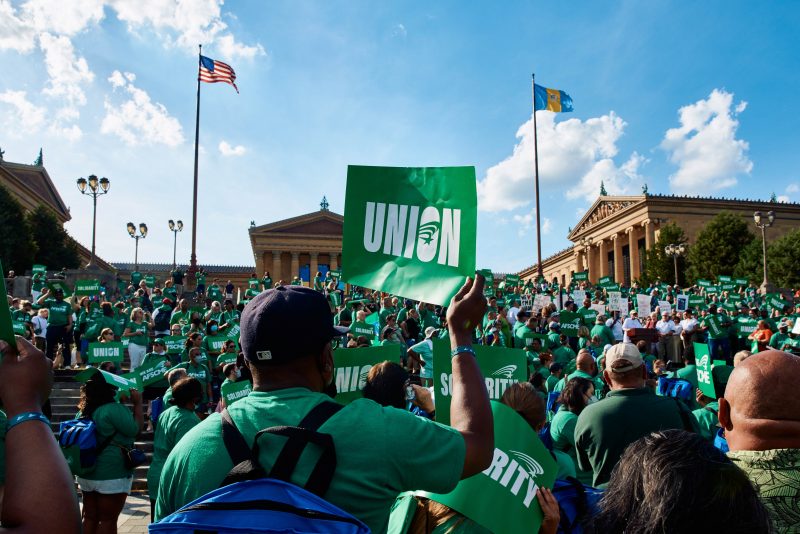
As is common these days, much of the discourse unfolded online over social media. For instance, when the PMA posted Berthe Morisot’s Portrait of a Child (1894), on Twitter @Wait_whatisthis responded, “I applaud the temerity of posting Morisot – who often depicted domestic life, including themes of motherhood – when you have yet to provide adequate parental leave.” Parental leave was one of the main issues on the union’s agenda, and since winning their contract, museum employees now, for the first time, have the right to four weeks of paid parental leave. Previously they had none.
When the PMA posted Claude Monet’s painting Railroad Bridge, Argenteuil (1873), Philadelphian civil rights, employment, and labor lawyer Ryan Allen Hancock retorted “In the ashes of the Commune, Monet helped found an org that was based on equal rights of its members and the ability to vote for its leaders. Its first exhibition included nighttime hours so that workers could visit the art. Monet wouldn’t cross the picket line.”
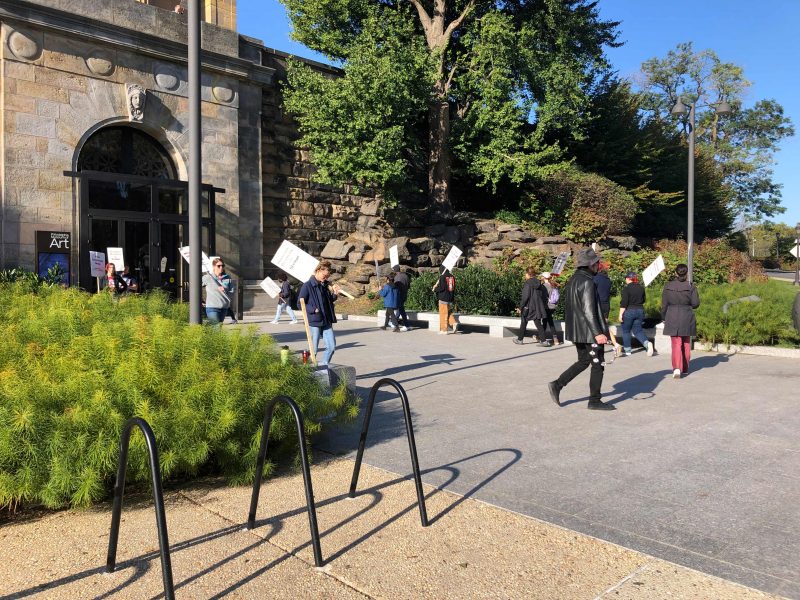
Hancock’s message is both pointed and historically germane. The Commune that he referenced was a revolutionary government comprised of working- and lower-middle class people that seized power from the conservative and royalist French government in 1871. Although the French Army soon violently quashed the revolt, the events constituted a complete political and cultural reset in nineteenth-century France. In its wake, Monet helped found the Société Anonyme Coopérative des Artistes Peintres, Sculpteurs, Graveurs (Cooperative Society of Painters, Sculptors and Engravers) which allowed artists to represent themselves and challenged the monopoly that the Royal Academy, the established art authority at the time, had on creative expression and taste.
In response to a statement that the PMA released declaring that social media comments would be disabled on their accounts due to an influx of profane comments, Philadelphian writer Dena Driscoll simply responded with an image of Marcel Duchamp’s famed readymade Fountain (1917), a porcelain urinal. She added an additional comment: “Love a museum gatekeeping what’s profane.” While it ruffled feathers in 1917, Fountain is now considered one of the most important works in the history of modern art and thus stands as a perfect example of how art institutions have at times dismissed new ideas as radical only for those same ideas to become canonical years later.
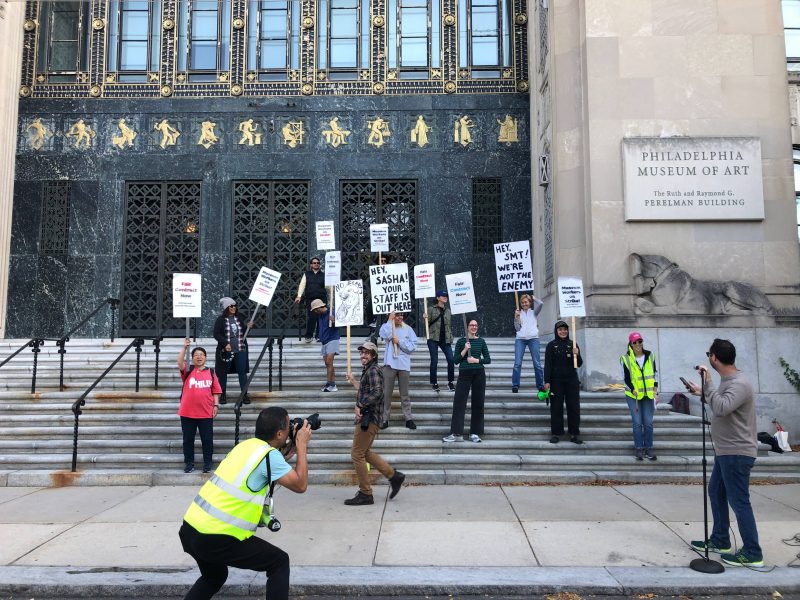
Bryan Hilley, a Collections Assistant at the Nasher Museum of Art, responded to the same post with an image of Barbara Krueger’s Untitled (We will no longer be seen and not heard) (1985) which also resides in the PMA’s permanent collection, although it is not on view. The work features several images of adolescents and young adults, some of whose gestures might be considered a bit rude, paired with the slogan that plays on the aphorism that children should be seen and not heard. Hilley’s selection of the work is pointed: efforts to silence dissidence result only in agitating more dissidence.
Aside from online action, picketers also used art in their protests. The Protest Banner Lending Library, a project created and led by Chicago-based Korean American artist Aram Han Sifuentes, made banners available to union members. PMA union members carried a large banner, which featured a repeated pattern of bright yellow sunflowers on a black ground with the text “OTRO MUNDO ES POSIBLE (Another world is possible),” in large bold text. The works were lent by Philadelphia’s Asian Arts Initiative where Sifuentes completed a residency in 2018.
The PMA Union’s victory has sent shockwaves through other museums across the country where more and more art workers are organizing and demanding higher wages, benefits, and work environments. So far, workers at the Jewish Museum, Mass MoCA, the Wexner Center, the MFA Boston, Dia Art Foundation, and Film Form have unionized, announced their intent to unionize, or signed their first contracts. With the winds of change stirring in the museum world, prominent art institutions should take note: Do not cross the picket line, join it!
[Ed Note: For Artblog’s coverage of the PMA workers’ strike go here, here, and here.]


